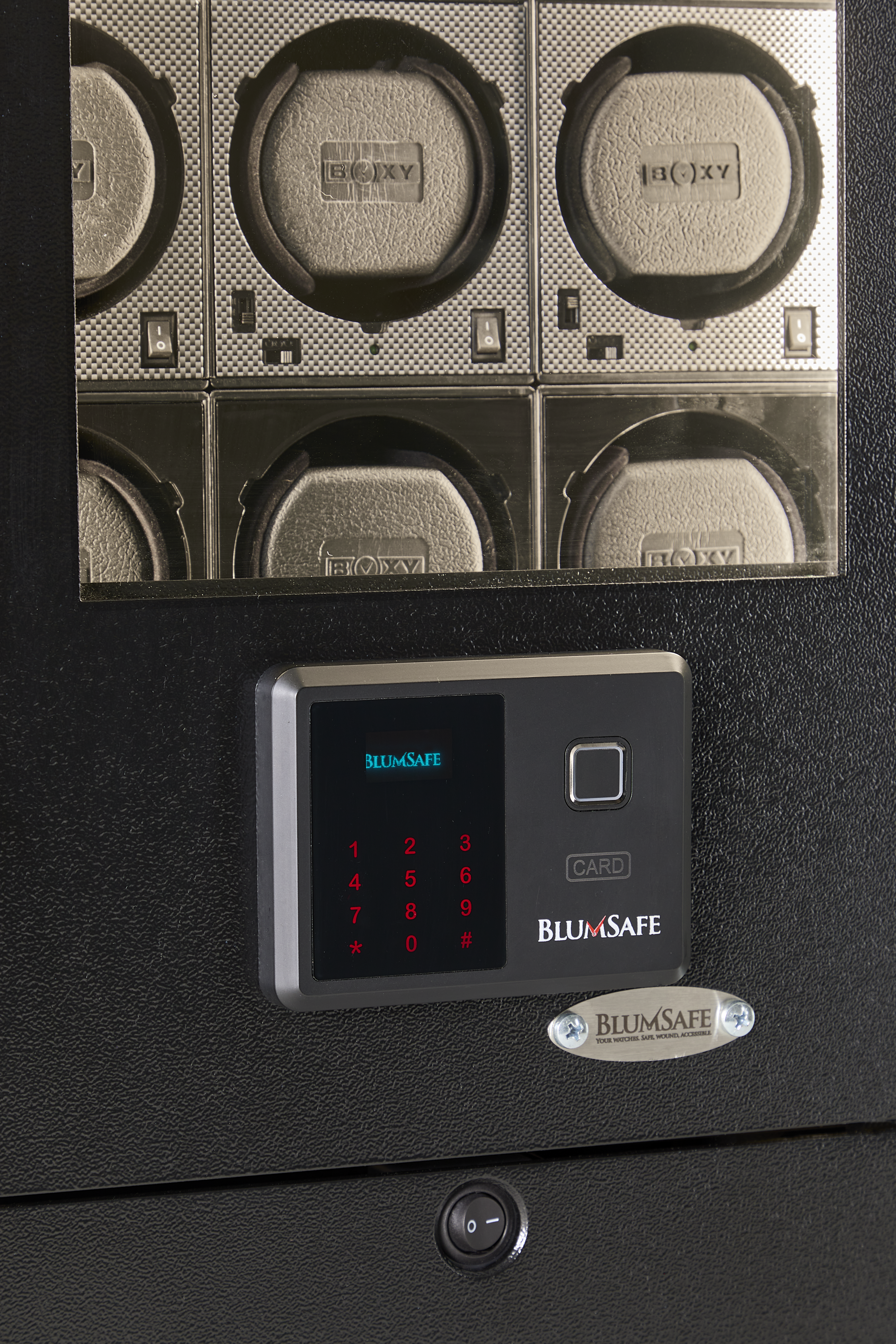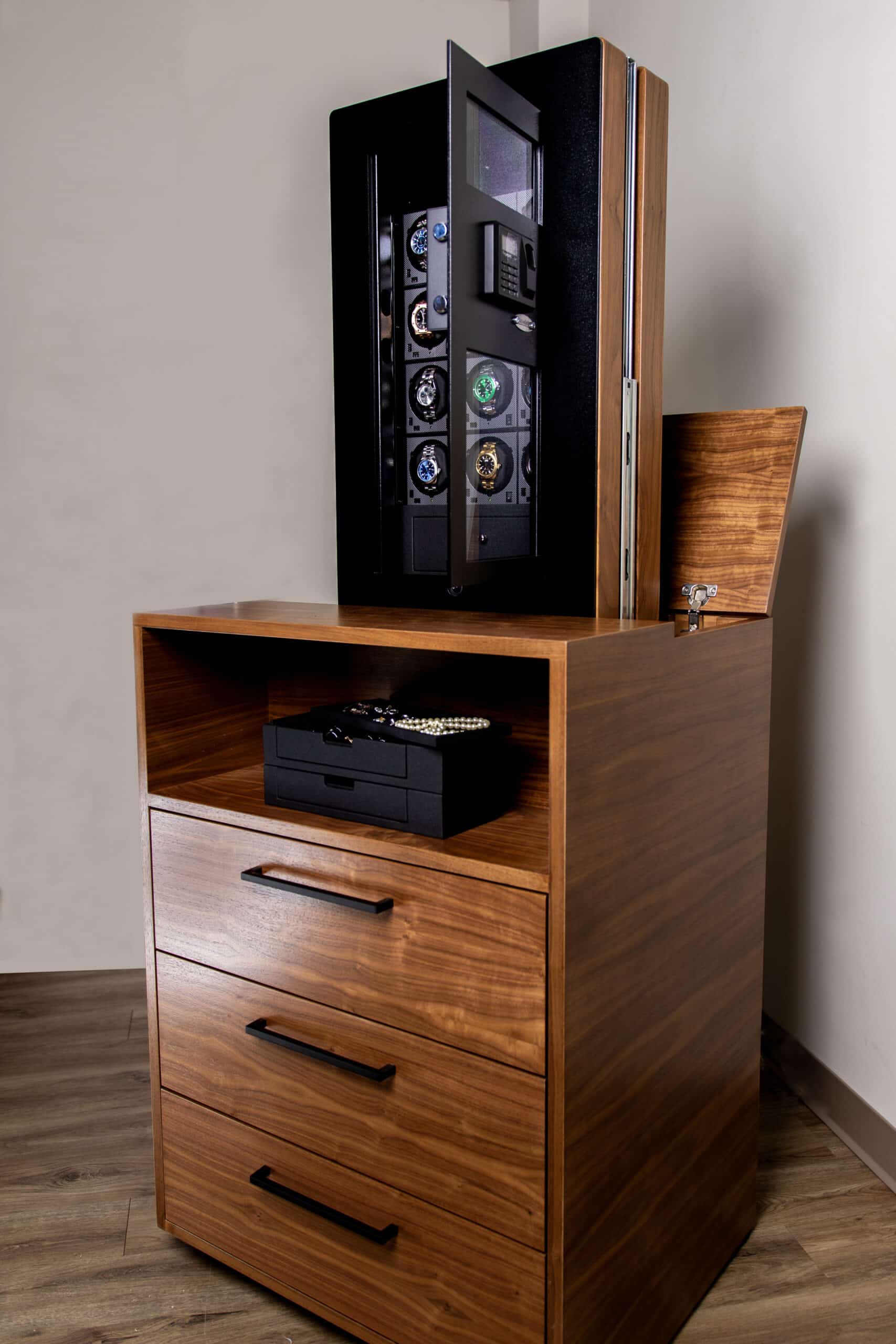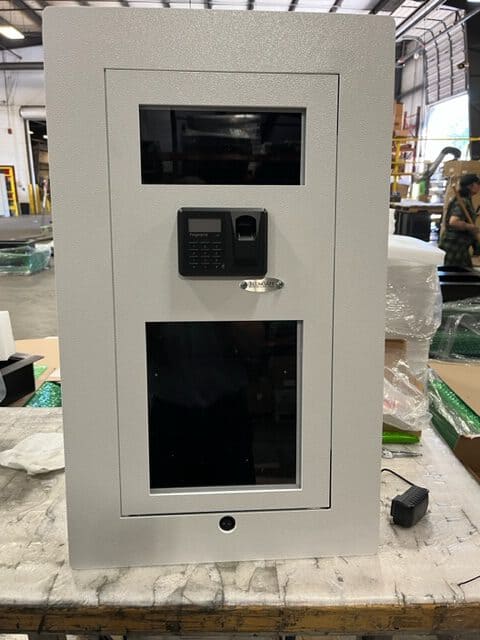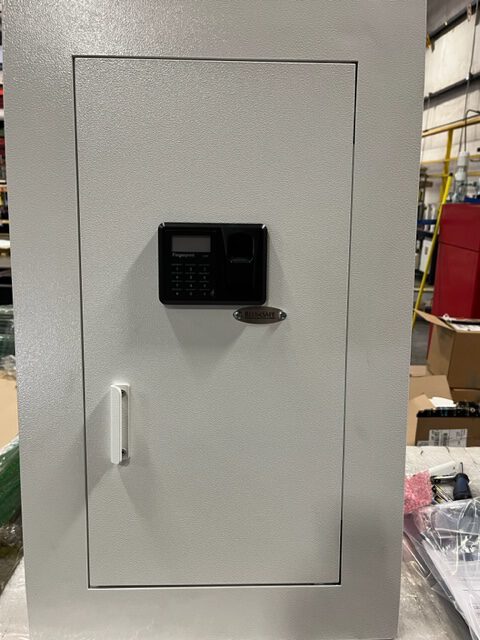Several years ago we wrote about different do-it-yourself technologies allowing you to monitor your BlumSafe on your smartphone, in order to protect your watch winder safe and its contents. These articles gave practical advice for monitoring your watches and jewelry by using cameras or the Samsung SmartThings environmental sensors, which detect opening, vibration and temperature of your BlumSafe.
This article provides information on updated technologies and products in this area that are easier to use and, in some cases, provide greater functionality.
The Layered Approach to Property Security. The ability to get a notification of suspicious activity on your phone is an obvious benefit, but is only the final part of a holistic approach to protecting your BlumSafe. Good security should always involve multiple, complementary levels of protection – a combination of active, passive and deceptive tactics. The second to last of these steps for protection of your BlumSafe and its contents is concealment, which can be accomplished with our unique Electronic Screen, Magic Mirror or regular mirror. Or one could just mount a hinged painting over a BlumSafe. And If you don’t have the wall, cabinet or closet space for a BlumSafe, then there is always our patent-pending Concealment Cabinet, which hides your safe in a piece of furniture (either ours or yours), to come into view upon your verbal or smartphone command.
The Final Step: An Environmental Notification Sensor On Your BlumSafe. If someone has gotten to your BlumSafe without detection. Now what? That is where an electronic sensor mounted in the safe comes into play, able to communicate to you and others any attack on the safe or a fire, set off an audible alarm to scare the felon away, etc. If your home has a central alarm that is monitored by an external monitoring company, you can have their service technician put an alarm sensor on your BlumSafe. But between the fact that I am mildly paranoid and a lifelong do-it-yourselfer, I prefer not to introduce an alarm company guy to my safe.
Fortunately, we live in the Internet-of-Things (IoT) age, where anyone can buy a couple of sensor devices and maybe a hub to effortlessly control or monitor their own home. I go back a long way as a DIY home automation geek, first playing with X10 devices back in the 70’s, and I have successive generations of these technologies littering my house and workshop. Watching and playing with increasingly powerful and user friendly systems over the decades(!?!) has been a lot of fun.
Anyway, even in the eight years since Blumsafe started, there have been a lot of developments in usability and affordability of these systems, as well as mass consumer adoption. When we started BlumSafe back in 2016, this type of technology was not as mature and easy-to-use as it is today. Virtually the only mass market product that fit that description and could be used to monitor a BlumSafe was the Samsung SmartThings system (or at least the only system to survive today). That system is still very much in use, and many of us have the SmartThings app on our phone working with other devices in our homes. Therefore, using SmartThings for a BlumSafe is still a convenient solution if you can find the hardware.
Other Alternatives To SmartThings. If you are not interested in hooking up your safe with a centrally monitored alarm company and its app, and want to “do it yourself” with something other than SmartThings — what are your other choices?
Your first decision is whether you “must” have it integrate with an existing app on your phone or are OK with adding yet another new app. Fundamentally, getting a new app doesn’t bother me, because I only really rely on the alerts it sends me if the safe breaches a parameter, like opening, when an alert will pop up on my phone.
But a lot of people have a thing about “app clutter” and want everything in one place. For those, I would look to see if your current ecosystem has a sensor that monitors three things:
–open/close
–vibration (if someone is attacking your safe with a hammer), and
–Temperature (i.e., if there is a fire event – though this one is less important to me — presumably one’s home fire alarm would detect this).
Subject to the foregoing “app clutter” caveat, here is a rundown of some products I found that you might want to consider, all available on Amazon:
1. Ring Alarm Contact Sensor. If you have a Ring alarm base station in your house, then this contact sensor may make a lot of sense. Plusses: it is dirt cheap ($20), and works. The Ring app is among the easiest to use. Minuses: It only reports on door opening and closing, not vibration or temperature. It also probably will only work with the regular BlumSafe, but not with the heavier-duty BlumSafe Professional, which requires an external antenna.
2. The Nest Connect Sensor. Nest is the Pepsi to Ring’s Coke. Ring (owned by Amazon) infiltrated your home with its doorbell, Nest (owned by Google), by its thermostat. Plusses and Minuses are similar to the Ring, except the Nest also has a motion sensor, which may need to be blocked with tape in a display door BlumSafe.
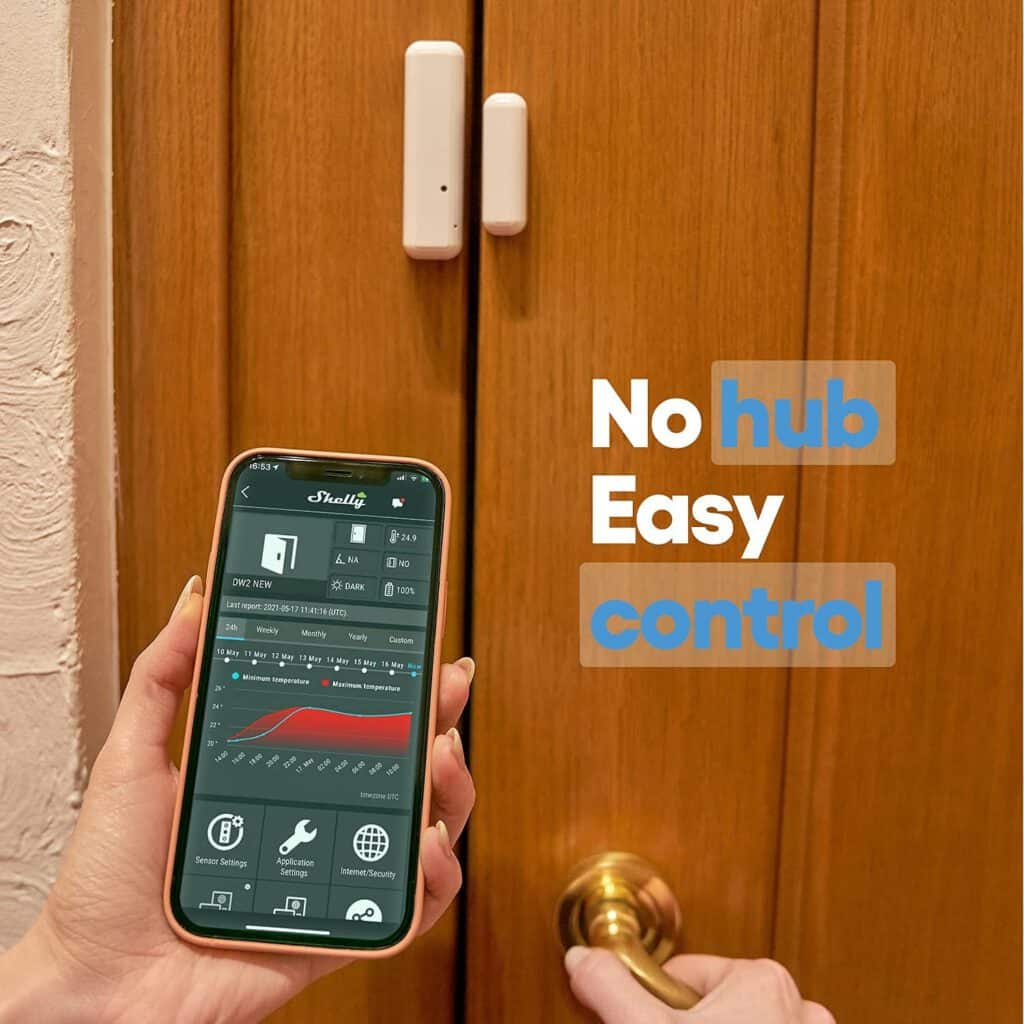
3. The Shelly Door and Window Sensor. This is my personal favorite for a BlumSafe (I haven’t tested it yet in a Professional), but not necessarily everyone’s, and more expensive than the Ring and the Nest at $53. I have Shelly gadgets throughout my vacation home controlling lights, storm shutters, etc. I love Shelley products, which operate on wifi rather than Z-Wave or other protocols and therefore do not require a local hub — just your wifi router (their latest generation of products ADDS Z-Wave and Bluetooth – but retains wifi as well). Their window sensor not only detects door opening, but also vibration and temperature sensing. And it comes from Bulgaria, subjecting it to draconian (and customer protective) EU privacy policies — so if you are paranoid like me, your personal information is likely not being stolen (China) or commercialized (big tech). The big Minus for Shelly? Setup can be more complicated than the more consumer-friendly Ring and Nest, which simply work out of the box, like a toaster – though the Shelley app is incredibly robust, offering tons of customization possibilities (e.g., “if BlumSafe is detected as open, turn on lights in house and flash outdoor lights on and off”).
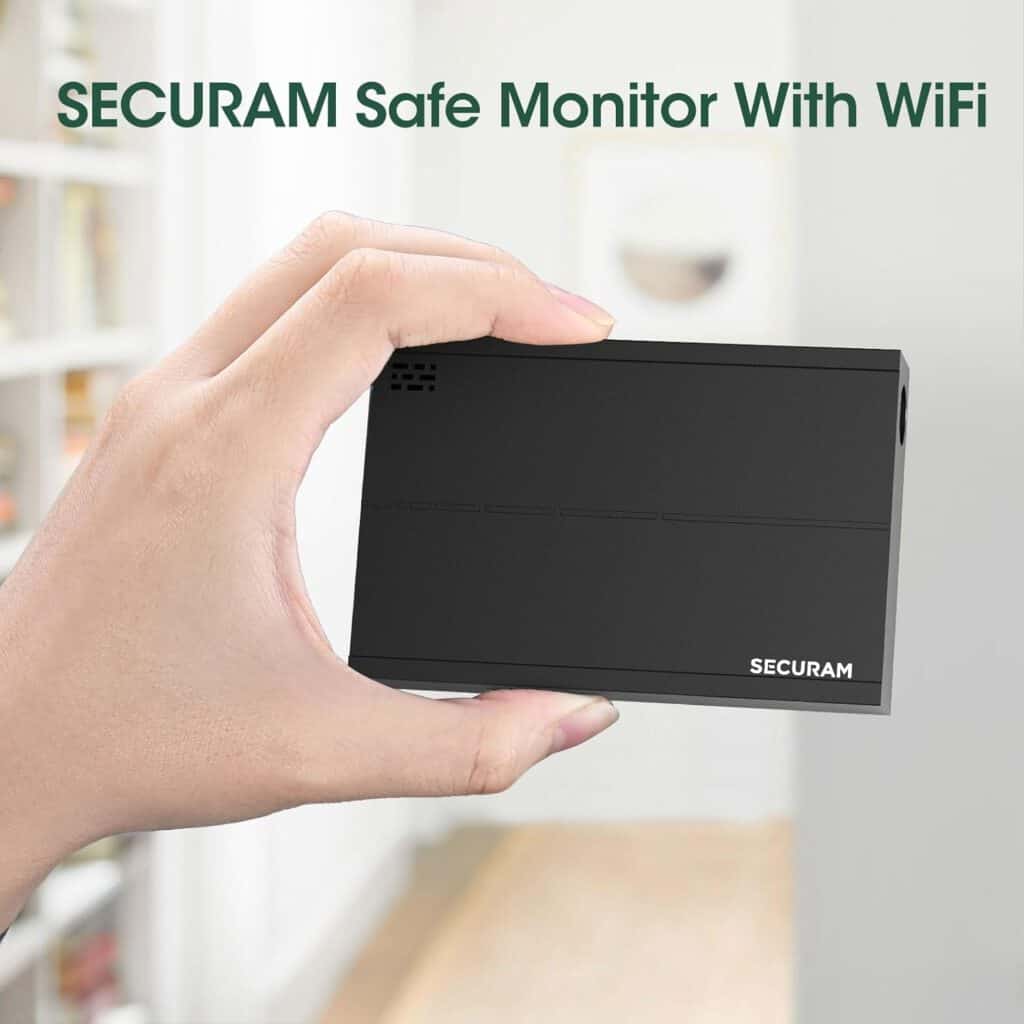
4. Securam Safe Monitor. Lastly, and significantly more expensively at $160, is the Securam Safe Monitor – specifically designed for use in a safe. Securam makes a range of security products for safes, and this one checks all the boxes – not only sensing contact closure/opening of the safe, it also senses vibration, temperature and also humidity, sending all of that information to its proprietary app (unlike the three products above, you will likely not be able to use Securam’s app for anything else in your life). Like the Shelly, the Securam Safe Monitor doesn’t require a hub and works on wifi. Unlike all the other sensors mentioned, which all limit you to replaceable batteries for power, the Securam also permits you to plug in an AC adapter and never have to worry about batteries. Last but not least, the Securam has a detachable antenna than can go outside the safe, so it can be used with the Blumsafe Professional. And like the others, it doesn’t require an annual service contract to work for you. It is designed for safes, and the features reflect that.
And Never Forget Watch Insurance. And if all else fails, you should have insurance for your watches. Hodinkee watch insurance (I think they co-brand for Chubb Insurance) is a popular specialist brand that has said very nice things to customers about BlumSafe, so we’ll return the favor.

